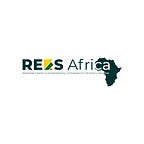Is Carbon Trading a Tool to Undermine African Development?
by Oluwafemi Salako
Africa, with her estimated population of 1.3 billion people, has twenty-seven (27) of the forty-three (43) low-income countries while sixteen (16) of the twenty (20) poorest nations of the world are also on the African continent. This situation has led to an increased call for the development of Africa as a whole.
The effect of climate change, which will be most felt by the poorest and the most vulnerable populations, also leaves Africa at its mercy. For Africa to become developed and counter the effect of climate change in the years to come, much more needs to be done for its economic development.
Carbon Trading
Carbon trading, otherwise called emissions trading, is a market-based system to limit greenhouse gases (GHG) contributing to global warming. This trading sets caps on emissions and companies, by choosing to trade their emissions or pay offset in reducing it. There are two schemes: Cap-and-Trade and Credit schemes. The trade may be in the form of International Emissions Trading (IET), the Clean Development Mechanism (CDM), and Joint Implementation (JI).
How it Works
Under Cap-and-Trade schemes, the governing body sets up a cap on allowable emissions. This cap corresponds to the emission reduction target, either distributed or auctioned off to companies in the industry. The cap reduces over time to enhance investment into cleaner and safer technologies.
Each company has a cap on emissions it can produce. A company that exceeds its cap on emissions will either reduce its emissions or buy allowances from a company with excess credits. A company whose emissions are not up to its cap can either sell its extra credits or bank it for future use. This method is the more popular of the carbon trading schemes.
The other scheme is a Credit Scheme, which works alongside Cap-and-Trade schemes. A company whose emissions are above its cap will have to fund an approved Carbon emissions reduction project. The credits gotten from this project will then be used to offset the emissions above its cap.
However, environmentalists canvas that Cap-and-Trade schemes are synonymous with companies selling and buying the ‘right to pollute’ from one another. In contrast, the trading scheme’s supporters see it as a cost-effective way to reduce CO2 emissions globally.
Advantages and Disadvantages of Carbon Trading
Setting up a market for carbon trading can help tackle environmental problems. It has been effective in the past when used to lower acid rains frequency by trading in Sulphur dioxide (SO2). Also, attaching a high commanding price to carbon will help decarbonize the environment in an easier way than attaching carbon taxes.
However, because Carbon lacks intrinsic value, it isn’t easy to create a market for it. The emissions cap must be strictly monitored to allow trading. The emissions allowances are often gotten for free due to political interference and ineffective regulation of the market.
Carbon Trading in Africa
While many populations in Africa will be pre-exposed to exacerbated climatic conditions ranging from water stress, heat stress to increased prevalence of infections and diseases, only 2% of the total world Carbon Trading market and 3% of CDM projects are occurring in Africa.
Africa has extensive forests we can invest in. Thus, her quest for economic development makes it a prime destination for carbon trading. An investment, especially in projects that will help counter the developed countries’ emissions, will contribute to climate change mitigation.
However, South Africa and the North African sub-region have gotten the larger size of the paltry carbon trading investments in Africa. The signing of the CFTA free trade agreement with an open trade area could result in a large-scale joint carbon emission trading scheme on the continent. It will as well help foster increased interaction between countries and companies in Africa.
Carbon Trading and Africa’s Development
If we look into Carbon Trading to foster economic development, companies and industries can invest in generating carbon credits by developing projects that reduce GHG emissions. These credits can be generated from renewable energy, waste treatment, or energy efficiency projects. The credits so obtained can be sold and monetize in the international Carbon Trading market.
Many anti-Carbon Trading proponents have argued that limiting Africa’s pollution power by investing in greener technologies will reduce its development rate. For example, the massive gap in energy needed for development and energy generation led to the discussion of whether energy should be sourced from renewable or nonrenewable sources. Building a coal-powered power station at its inception is cheaper than building a solar or wind-powered power plant of equal power generation capacity.
However, the price to produce green and renewable energy per megawatt (MW) reduces over time. There have been 67% and 86% reductions in the cost of harnessing power from wind and solar sources, respectively, between 2009 and 2017.
With investments in greener and cleaner energy sources in Carbon Trading schemes for credit, Africa’s development can be fast-tracked while ensuring that climate change issues are being considered and fought against.
Conclusion
There is a large market for Carbon Trading and thus development in Africa if adequately harnessed. The continent will be better if we put proper regulations in place for the trading. Getting adequate energy from renewable sources while combating climate change and ensuring economic development is a three-legged stool that will support African growth.
